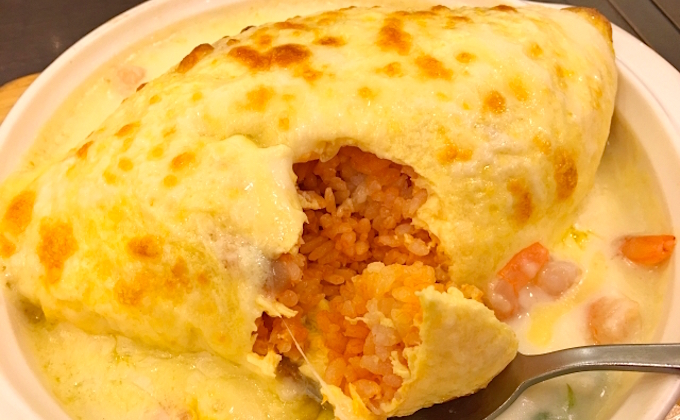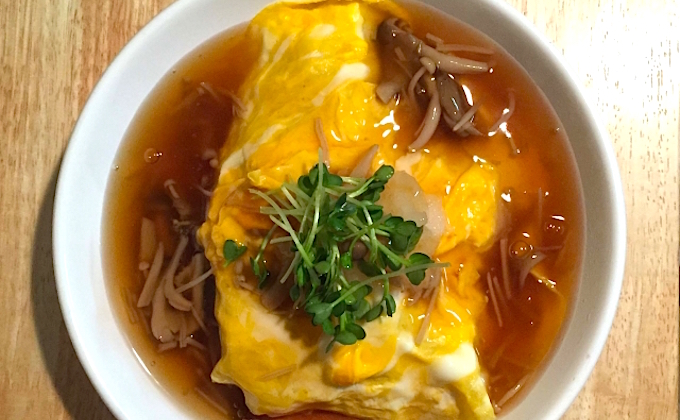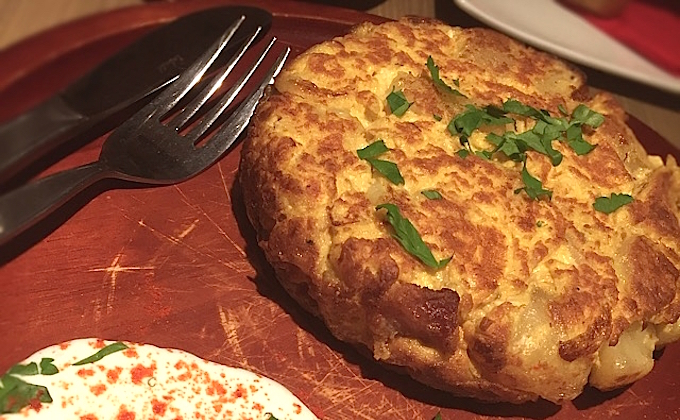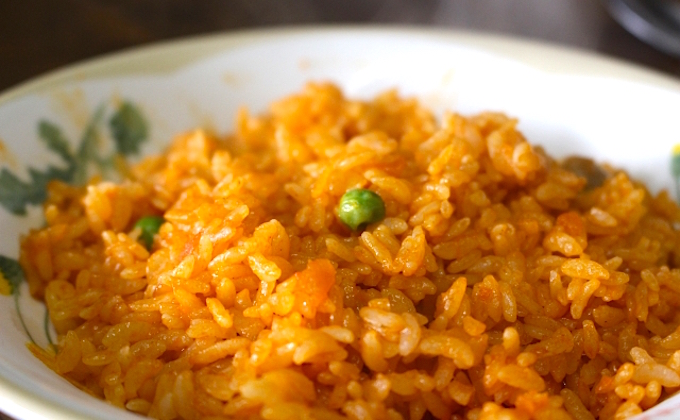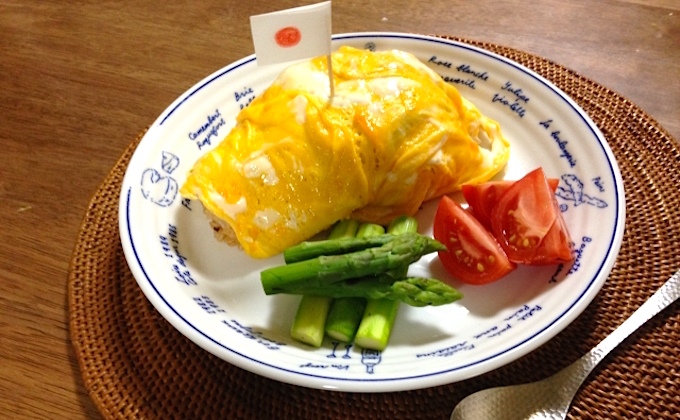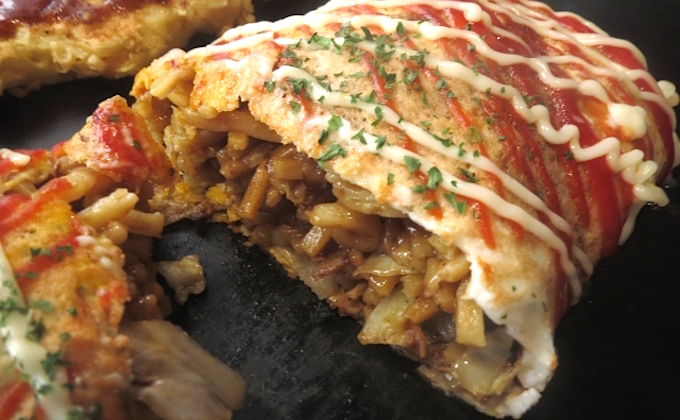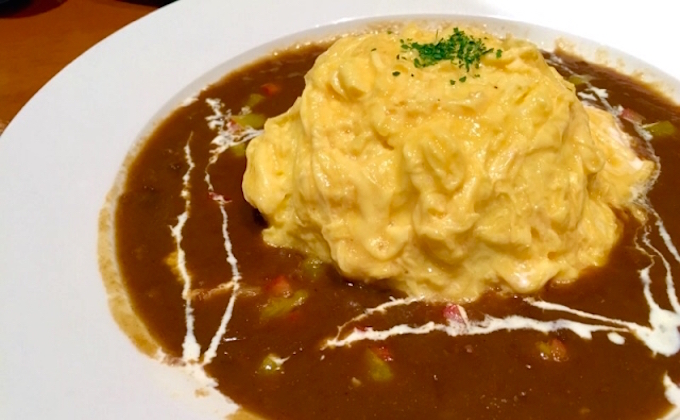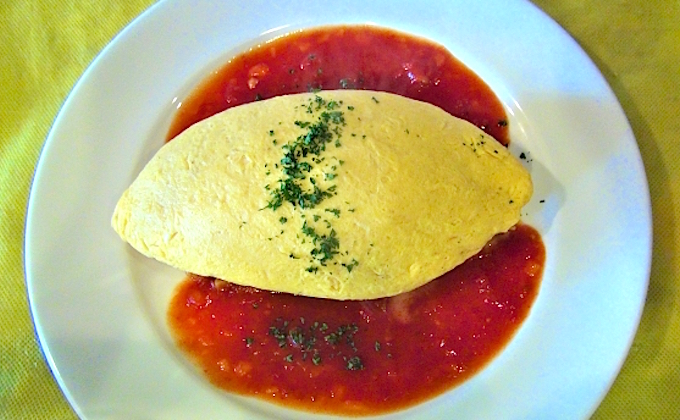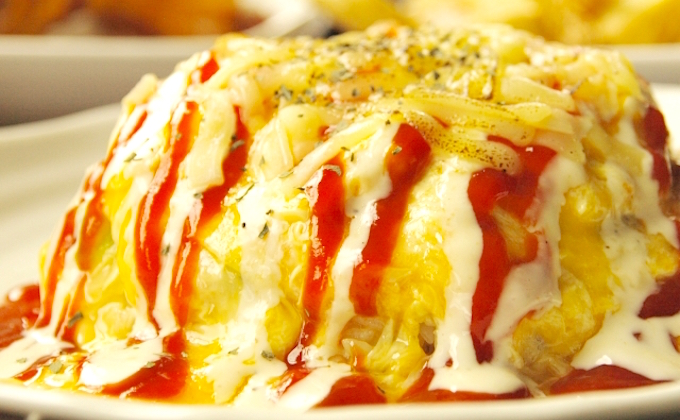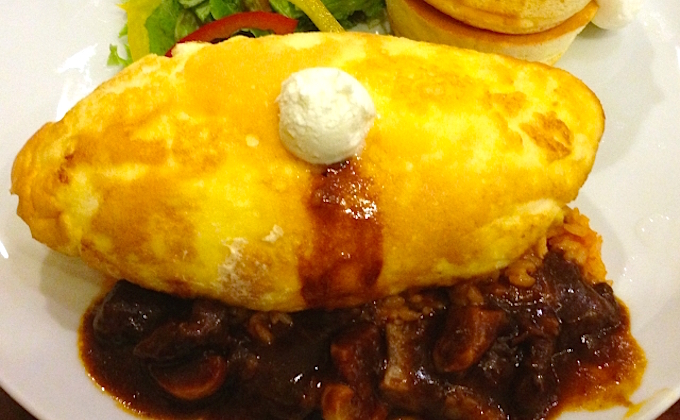TRG Info and Advice
Omuraisu (omelettes stuffed with fried rice)
What is omuraisu?
Omuraisu is a dish native to Japan, but the name is derived from “omelette” in French and “rice” in English. Omuraisu is one of the three major Japanese rice menus served at yoshoku restaurants, along with kare-raisu (curry with rice) and hayashi-raisu (hashed beef with rice). The most typical omuraisu is prepared by stir-frying rice, chicken, onions, and other things, and then seasoning this mixture with ketchup. This is then wrapped in eggs and topped with more ketchup. Omuraisu is a typical Japanese yoshoku menu item served not only at yoshoku restaurants, but also at “family restaurants” (restaurants that offer a wide variety of dishes in an easy-going atmosphere), cafés and Japanese-style izakaya pubs. Omuraisu is popular with men and women of all ages. A versatile dish, each restaurant can offer its own style of omuraisu, so nowadays, there are numerable varieties of omuraisu available.
The History of Omuraisu
There are some theories concerning the origin of omuraisu, rice omelettes. One famous theory claims that it originated from a dish for staff members provided at a yoshoku restaurant, which features Japanized western-style dishes. The dish was a mixture of ingredients, rice and eggs cooked together, and resembled a Spanish omelette. This was before tomato ketchup became available in Japan.
The current style of omuraisu, which is an omelette stuffed with ketchup-flavored fried rice and chicken, was completed after tomato ketchup began to be sold in 1908. This form of omuraisu is said to have first been served at a yoshoku restaurant in Osaka in 1925.
Omuraisu, served with a tiny paper Japanese flag on top, was introduced as an okosama ranchi (children’s set menu) at Mitsukoshi department store in Nihonbashi, Tokyo in 1930, and quickly became all the rage in department store restaurants.
Around 1955, a restaurant in Tokyo began serving a version of omuraisu made with half-cooked eggs and a demi-glace, rich brown sauce. This was the emergence of the “fuwatoro” (literally: fluffy and creamy) open-faced omelette. This innovative style of omuraisu was featured in the film “Tampopo,” in 1985, and gained huge popularity. Thus, more and more restaurants and cafés began serving omuraisu in this new style, with softly cooked eggs.
Nowadays, omuraisu is incorporated in various dishes, including yakisoba (stir-fried noodles) and kare (curry). Those dishes are named after the teamed dish, such as omusoba and omu-kare and have taken root in Japanese food culture. Many varieties of omuraisu can be found today.
Omuraisu Varieties
Maki Omuraisu (rolled rice omelette)
Maki omuraisu is prepared by wrapping fried rice with chicken in a thinly cooked omelette, which is then shaped to look like an almond, and topped with ketchup. This is an authentic type of omuraisu. There are some dishes derived from this type of omuraisu, such as omusoba, which is an omelette stuffed with stir-fried noodles instead of fried rice with chicken.
Open-Faced Omuraisu
Open-faced omuraisu is fried rice with chicken covered with a soft-cooked omelette. This is usually called fuwatoro (fluffy and creamy) omuraisu. When cut in the center, soft eggs spread over the rice. In addition to ketchup, variations on the sauce include demi-glace rich brown sauce, curry sauce, bechamel white sauce, etc.
Raisu Omuretsu
Raisu omuretsu is omuraisu in the old style, which is made by grilling the mixture of rice and eggs in the shape of an omelette. This style was produced at a yoshoku restaurant in Ginza, Tokyo, where omuraisu originated.







